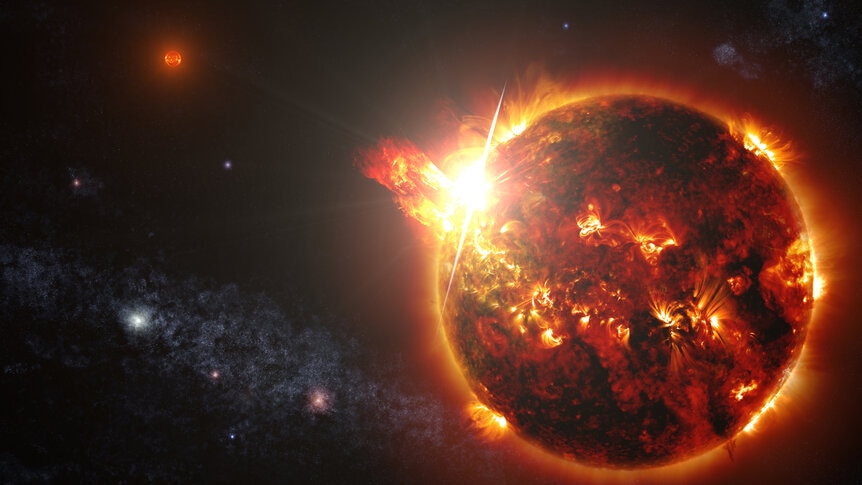Create a free profile to get unlimited access to exclusive videos, sweepstakes, and more!
Close Encounter of the Stellar Kind

Seventy thousand years ago, a pair of stars gave our solar system a close shave. But if you had been around for it, you wouldn’t even have noticed.
The stars are a part of a binary system found by astronomer Ralf-Dieter Scholz in a sky survey taken by NASA’s WISE observatory. They’re currently about 20 light-years away, and moving away from us at a speed of about 80 kilometers per second.
The interesting thing is that astronomers carefully measured the stars’ sideways motion across the sky, what we call the proper motion, and found it to be very small. That means the stars are heading almost directly away from us … so sometime in the past they must have been much closer!
Eighty kps is pretty fast—2.5 billion kilometers per year, or roughly a light-year every 4,000 years. When you do the math carefully, it turns out these stars passed us just 70,000 years ago!
The exact distance at which they blew by us is harder to tell due to uncertainties in their motion, but the best estimate is that they were about 0.8 light-years away—far closer than the current nearest star, Proxima Centauri, which is 4.2 light-years away. On a galactic scale, that’s really dang close.
Weirdly, though, if you had been standing on Earth, you wouldn’t have seen them. Both stars are intrinsically very faint. The bigger of the two is classified as an M9, barely a star at all. If it were much smaller it wouldn’t have enough mass to fuse hydrogen into helium in its core, the defining characteristic of a star (more or less). The other is an even dinkier brown dwarf, not really big enough to be a star but still far more massive than a planet.
Together, they only manage to shine at a meager magnitude of 18.3—the dimmest star you can see with your naked eye is still over 60,000 times brighter! And even 70,000 years ago when they passed us they still would’ve been too faint to see by naked eye.
Interestingly, the bigger of the two is what we call a flare star: It’s magnetically active, and can have surface eruptions like solar flares, but far more powerful. These explosions can be big enough that briefly, for a few hours or so at a time, the star would’ve been naked eye visible.
I’ll note that it’s not like these two stars whizzed past us like a starship in a movie; even at their velocity they would’ve been relatively close for centuries. I have to wonder if any prehistoric people saw a flare from the star, and wondered where that new point of light in the sky came from … ? But then, they may have had more immediate problems on their minds.
You might think it’s kinda funny we’ve never seen these stars before. They are faint, which makes them more difficult to spot, and they also happen to be in a part of the sky lousy with stars, near the plane of our galaxy. They were hiding in plain sight.
And one final note. Uncertainties in the distance at closest approach means that it’s entirely possible these stars got close enough to very slightly influence our solar system gravitationally; specifically, the Oort Cloud, the huge spherical cloud of giant icy chunks of material orbiting the Sun way, way past Neptune. The gravity of the stars could have disturbed the orbits of these far-flung cometary bodies, dropping them in toward the inner solar system … and us.
But before you panic, note that the time it takes to fall from that distance is about 2 million years! So if we’re going to experience a hail of death from deep space, we have another 1,930,000 years to go. I’m OK with that.



























